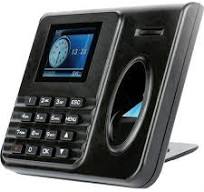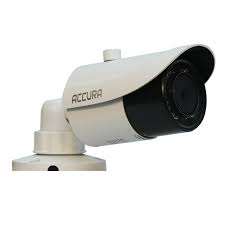ESSL Access Control: Enhancing Security and Efficiency
Access control systems play a crucial role in ensuring the security and efficiency of various organizations and facilities. Among the leading providers of access control solutions, ESSL stands out for its innovative technology and reliable performance.
ESSL access control systems are designed to provide seamless and secure access management for businesses, government agencies, educational institutions, and other entities. These systems offer a range of features that enhance security while streamlining operations.
One key advantage of ESSL access control systems is their scalability. Whether you have a small office or a large enterprise, ESSL offers solutions that can be tailored to meet your specific needs. From basic standalone systems to advanced networked solutions, ESSL has options for every requirement.
Another notable feature of ESSL access control systems is their user-friendly interface. With intuitive software and easy-to-use hardware components, managing access rights and monitoring activities becomes simple and efficient. Administrators can easily set permissions, track entries and exits, generate reports, and more with just a few clicks.
ESSL access control systems also prioritize security through advanced authentication methods. From traditional card-based systems to biometric readers that use fingerprints or facial recognition, ESSL offers cutting-edge technology to ensure only authorized individuals can access restricted areas.
Besides enhancing security, ESSL access control systems contribute to operational efficiency. By automating processes such as attendance tracking, visitor management, and timekeeping, organizations can save time and resources while maintaining accurate records.
In conclusion, ESSL access control systems are essential tools for modern businesses looking to bolster their security measures and optimize operational workflows. With their combination of reliability, scalability, user-friendliness, and advanced security features, ESSL sets the standard for effective access control solutions.
Top 7 Benefits of eSSL Access Control Systems for Enhanced Security and Efficiency
- Reliable security features ensure unauthorized access is prevented.
- Scalable solutions suitable for businesses of all sizes.
- User-friendly interface simplifies access management tasks.
- Advanced authentication methods, including biometrics, enhance security.
- Automation of processes like attendance tracking improves operational efficiency.
- Customizable options to meet specific organizational needs.
- Integration capabilities with other systems for enhanced functionality.
Challenges of Implementing ESSL Access Control Systems: Key Considerations
- Initial setup and installation can be complex and time-consuming.
- High initial investment cost for advanced features and scalability.
- Compatibility issues with certain third-party hardware or software.
- Regular maintenance and updates may require additional resources and expertise.
- Limited customization options for specific organizational needs.
Reliable security features ensure unauthorized access is prevented.
The reliable security features of ESSL access control systems ensure that unauthorized access is effectively prevented. By utilizing advanced authentication methods such as biometric recognition and secure card readers, ESSL systems guarantee that only authorized individuals can enter restricted areas. This proactive approach to security not only enhances the overall safety of the premises but also instills confidence in the organization’s ability to protect sensitive information and assets from potential threats.
Scalable solutions suitable for businesses of all sizes.
ESSL access control systems offer scalable solutions that are well-suited for businesses of all sizes. Whether you run a small startup or a large corporation, ESSL provides access control options that can be customized to meet your specific requirements. This scalability ensures that as your business grows and evolves, your access control system can easily adapt to accommodate changes in the organization’s structure and security needs. By offering flexible solutions that cater to businesses of varying sizes, ESSL enables companies to implement robust access control measures without limitations based on their scale of operations.
User-friendly interface simplifies access management tasks.
The user-friendly interface of ESSL access control systems simplifies access management tasks, making it effortless for administrators to set permissions, track entries and exits, generate reports, and monitor activities. With intuitive software and easy-to-use hardware components, navigating the system becomes a seamless process, enhancing efficiency and productivity within organizations. This feature not only saves time but also reduces the complexity associated with access control management, ensuring smooth operations and a heightened level of security throughout the premises.
Advanced authentication methods, including biometrics, enhance security.
Advanced authentication methods, such as biometrics, play a pivotal role in enhancing security within ESSL access control systems. By incorporating cutting-edge biometric technology like fingerprint or facial recognition, ESSL ensures that only authorized individuals can gain access to restricted areas. This high level of security not only mitigates the risk of unauthorized entry but also provides a more reliable and tamper-proof means of authentication compared to traditional methods like keycards or PIN codes. With advanced authentication methods, ESSL access control systems offer a robust and foolproof security solution that instills confidence in organizations seeking to safeguard their premises and sensitive information.
Automation of processes like attendance tracking improves operational efficiency.
Automating processes like attendance tracking through ESSL access control systems significantly enhances operational efficiency for organizations. By eliminating manual data entry and streamlining the recording of employee attendance, businesses can save time and resources while ensuring accurate and reliable tracking of work hours. This automation not only reduces the risk of errors but also enables managers to access real-time attendance data, facilitating better decision-making and resource allocation. Overall, the ability of ESSL access control systems to automate attendance tracking contributes to smoother operations and improved productivity within the organization.
Customizable options to meet specific organizational needs.
ESSL access control systems offer a significant advantage with their customizable options tailored to meet specific organizational needs. This flexibility allows businesses to design access control solutions that align precisely with their unique requirements, whether it’s adjusting user permissions, integrating with existing security infrastructure, or implementing specialized authentication methods. By providing this level of customization, ESSL empowers organizations to enhance security measures effectively and efficiently while ensuring seamless integration into their existing operations.
Integration capabilities with other systems for enhanced functionality.
ESSL access control systems offer a significant advantage through their integration capabilities with other systems, allowing for enhanced functionality and seamless operation. By connecting with various security, surveillance, and management systems, ESSL access control can provide a comprehensive solution that improves overall security measures and operational efficiency. This integration enables organizations to centralize control and monitoring processes, streamline data sharing between different platforms, and create a more cohesive security ecosystem. With the ability to integrate with multiple systems, ESSL access control enhances flexibility and customization options to meet the specific needs of diverse environments effectively.
Initial setup and installation can be complex and time-consuming.
Setting up and installing ESSL access control systems can present a challenge due to the complexity and time-consuming nature of the initial configuration process. From integrating hardware components to configuring software settings, the setup phase may require careful planning and technical expertise to ensure seamless functionality. This complexity can lead to delays in implementation and potential disruptions to daily operations as organizations navigate through the intricacies of getting the system up and running efficiently. Despite this con, investing time and resources in the initial setup of ESSL access control systems is crucial for maximizing their security benefits and operational advantages in the long run.
High initial investment cost for advanced features and scalability.
One significant drawback of ESSL access control systems is the high initial investment cost required to access advanced features and scalability. While ESSL offers a range of cutting-edge technologies and customizable solutions to meet diverse security needs, the cost associated with implementing these advanced features may pose a barrier for some organizations, especially smaller businesses or startups operating on limited budgets. The initial investment required for scalability can also be a concern for businesses looking to expand or upgrade their access control systems in the future. Despite the benefits of ESSL access control systems, the higher upfront costs for advanced features and scalability may deter some potential users from fully leveraging the capabilities of these solutions.
Compatibility issues with certain third-party hardware or software.
One drawback of ESSL access control systems is the potential compatibility issues that may arise with certain third-party hardware or software. While ESSL offers a range of integrated solutions, there could be instances where specific external devices or applications do not seamlessly integrate with the system. This can lead to challenges in achieving full functionality and interoperability, requiring additional troubleshooting and customization efforts to ensure smooth operation. Organizations considering ESSL access control systems should carefully evaluate their existing infrastructure and compatibility requirements to mitigate any potential issues related to third-party hardware or software integration.
Regular maintenance and updates may require additional resources and expertise.
Regular maintenance and updates of ESSL access control systems can pose a challenge as they may demand extra resources and expertise. Ensuring the smooth functioning and security of the system necessitates periodic maintenance checks, software updates, and hardware upgrades, which can incur additional costs and require specialized knowledge. Organizations must allocate time and budget for ongoing maintenance to prevent system vulnerabilities and ensure optimal performance. Moreover, staying abreast of technological advancements and implementing necessary updates may call for dedicated personnel with the expertise to handle complex configurations and troubleshooting tasks effectively.
Limited customization options for specific organizational needs.
One drawback of ESSL access control systems is the limited customization options available for specific organizational needs. While ESSL offers a range of standard features and configurations, some organizations may find it challenging to tailor the system to meet their unique requirements. This limitation can pose challenges for businesses with specialized security protocols or complex access control needs, as they may not be able to fully optimize the system to align with their operational processes. As a result, organizations seeking highly customized access control solutions may need to explore alternative providers that offer more flexibility in adapting the system to their specific demands.



